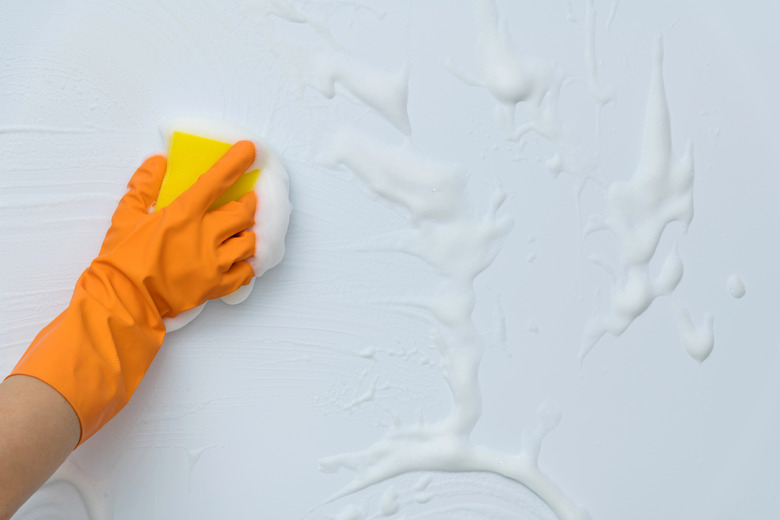How To Clean Walls Without Removing Paint
We may receive a commission on purchases made from links.
Greasy fingerprints, dirt smudges, and food splatters can make your painted walls look gross, but it's not always as simple as wiping them off. The paint finish affects how durable the paint is and how easy it is to clean it without damaging the painted surface. While most painted walls can be washed, the type of cleaner and how much scrubbing you can do depend on the finish.
Need to clean a painted wall? Here's how to do it without damaging the finish.
Figure Out the Paint Finish
Figure Out the Paint Finish
The paint finish or sheen affects the look of the painted surface as well as its durability. Matte and flat paint finishes are not reflective and disguise blemishes on the walls, but they're not as durable and are easily damaged with rough cleaning. Eggshell paint has a slight sheen and can handle a little more cleaning, but you can still rub off the paint if you wash it aggressively. Semigloss and gloss finishes have the most shine and are usually the easiest to wash without being damaged.
If you know what type of paint finish your walls have, you can determine how careful you need to be. If you're not sure, look at the wall in the sunlight. If it doesn't reflect much light, isn't shiny, and has a matte look, you'll likely need to be gentle when cleaning the wall to avoid removing the paint. If it has a shiny appearance, it's likely a more durable finish. It's still best to start gentle, but the finish can likely handle stronger cleaners or some scrubbing.
Dust What You Can
Dust What You Can
Some of the grunge on your walls could be loose dust or cobwebs that you can remove easily. Start with a vacuum or soft cloth to wipe the loose debris off the walls. Placing a cloth over your broom can help you cover the wall space faster and reach the higher parts of the wall. If your walls are really dusty, it can turn to a muddy mix on your walls when you add water.
Wash With Soap and Water
Wash With Soap and Water
For matte, flat, and eggshell finishes, the safest option is to clean with a damp sponge or use a little bit of soapy water. You can use the same method on semigloss and gloss walls. Choose a mild cleaner, such as gentle dishwashing soap, and mix it in a bucket with warm water. Distilled vinegar in warm water offers another gentle cleaning option. You'll also need a separate bucket of clean water. Here are the steps to clean the walls:
- Dip a soft sponge in the soapy water and wring out the excess water.
- Work in small sections starting at the top of the wall.
- Wipe down the wall gently with the dampened sponge. Dampen the sponge again as needed.
- Dip a second sponge into the clean water and go back over the cleaned area. This helps remove the cleaner and any remaining dirt.
- Repeat on the rest of the wall.
Press the sponge against the wall gently. Pushing too hard can discolor the wall or remove paint, especially with a low-sheen finish.
Scrub or Deep Clean
Scrub or Deep Clean
If you have semigloss or high-gloss walls, you can scrub a little harder while you clean. Focus on particularly dirty areas and use a little more elbow grease with the same soft sponge. Even though higher-sheen finishes are more durable, they can still scratch if you use abrasive cleaning tools.
You can also upgrade to a stronger cleaner on semigloss and gloss walls. Degreasing cleaners, such as grease-fighting dish soap, can help on these durable finishes. Nonabrasive multipurpose cleaners are also an option if you have especially dirty spots on your walls. Test out any cleaners in a hidden spot, such as the wall behind your sofa, to make sure it doesn't remove or discolor the paint.
